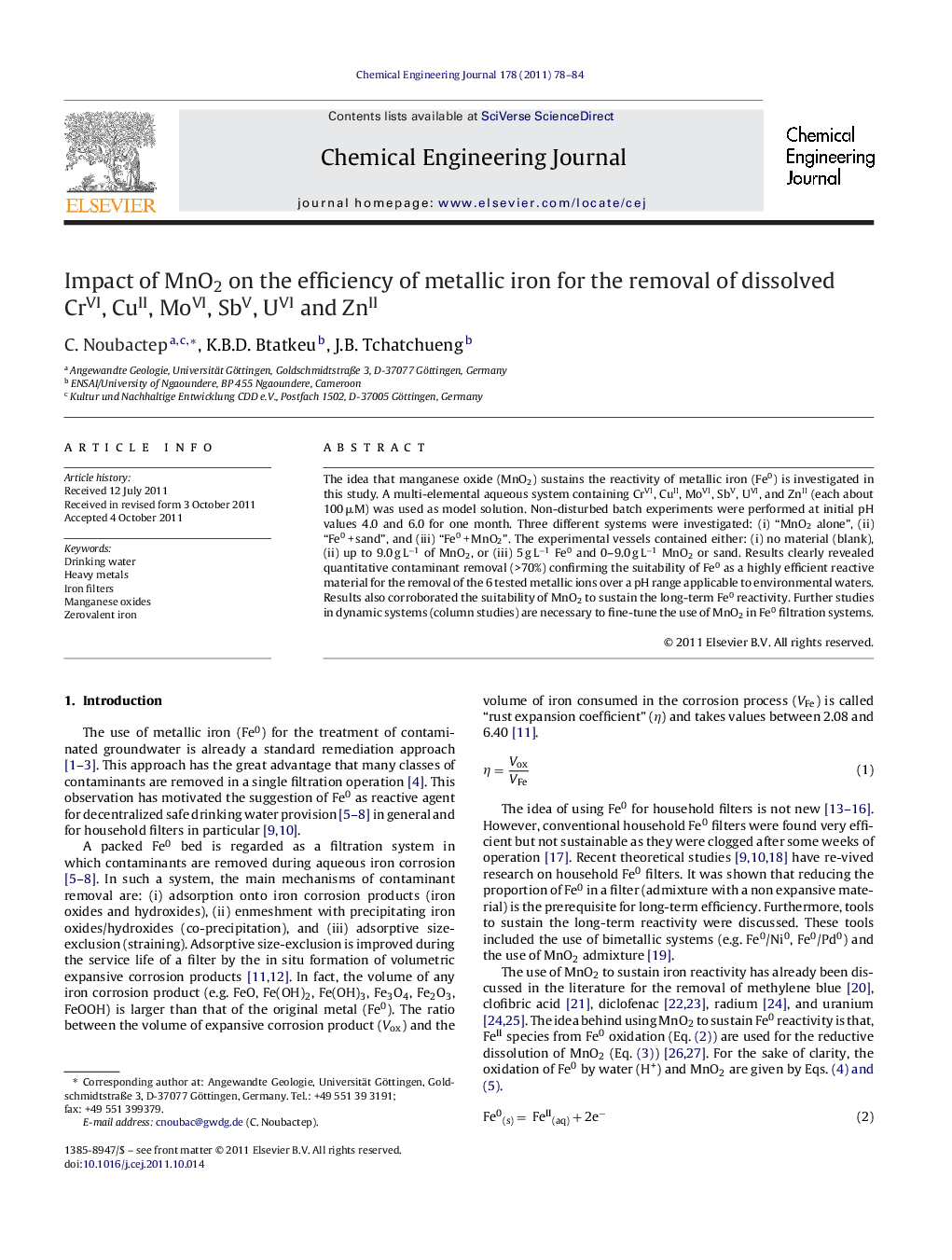| کد مقاله | کد نشریه | سال انتشار | مقاله انگلیسی | نسخه تمام متن |
|---|---|---|---|---|
| 150447 | 456450 | 2011 | 7 صفحه PDF | دانلود رایگان |

The idea that manganese oxide (MnO2) sustains the reactivity of metallic iron (Fe0) is investigated in this study. A multi-elemental aqueous system containing CrVI, CuII, MoVI, SbV, UVI, and ZnII (each about 100 μM) was used as model solution. Non-disturbed batch experiments were performed at initial pH values 4.0 and 6.0 for one month. Three different systems were investigated: (i) “MnO2 alone”, (ii) “Fe0 + sand”, and (iii) “Fe0 + MnO2”. The experimental vessels contained either: (i) no material (blank), (ii) up to 9.0 g L−1 of MnO2, or (iii) 5 g L−1 Fe0 and 0–9.0 g L−1 MnO2 or sand. Results clearly revealed quantitative contaminant removal (>70%) confirming the suitability of Fe0 as a highly efficient reactive material for the removal of the 6 tested metallic ions over a pH range applicable to environmental waters. Results also corroborated the suitability of MnO2 to sustain the long-term Fe0 reactivity. Further studies in dynamic systems (column studies) are necessary to fine-tune the use of MnO2 in Fe0 filtration systems.
► Fe0/MnO2 systems have been reported to be long-term efficient for contaminant removal.
► The suitability of MnO2 to sustain the removal of dissolved CrVI, CuII, MoVI, SbV, UVI and ZnII by Fe0 is demonstrated.
► Metal ions are progressively sequestrated by in situ generated iron corrosion products at pH > 4.5.
► Results corroborated the view that contaminants are fundamentally adsorbed and co-precipitated in Fe0/H2O systems.
Journal: Chemical Engineering Journal - Volume 178, 15 December 2011, Pages 78–84